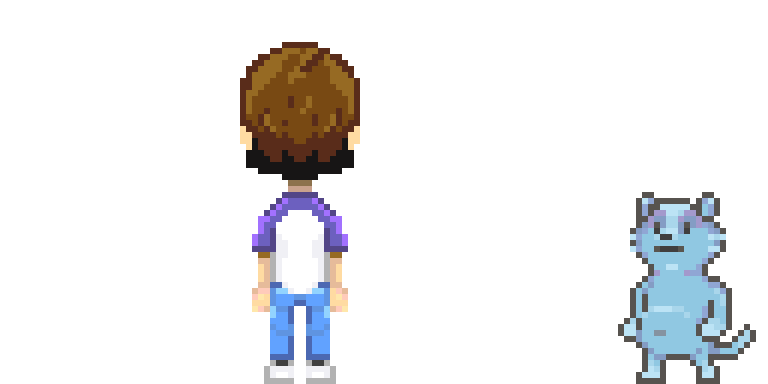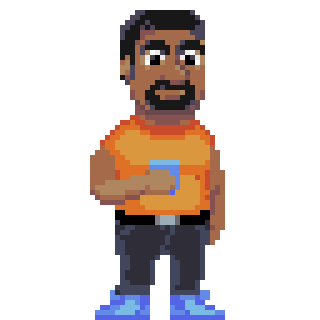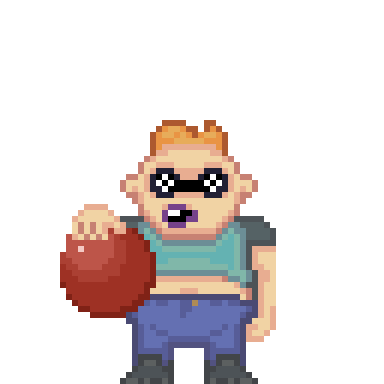My Role: Designer, artist, Sound, 3D modeler for game concept video from conception to completion.
The Challenge: My professional experience has mainly been as a game designer. That usually means I work with groups of other professionals with a wide range of specialties; artists, programmers, musicians, and other designers. While I love collaborating with others, I wanted to see how far I could take my vision for a game idea on my own in the Unreal Engine.
The Goal: Create a game world full of personality that reflected my experience growing up with games. Some of my favorite gaming memories took place in the neighborhood where I grew up. I remember exchanging secret codes with my friends, endlessly skimming through pages of game magazines, and of course sitting in my friends’ basements playing games together. It seems like a difficult thing to capture (and it was) but there is no harm in trying, right?
Key Challenge and Constraints
• Create all assets within the game on my own. No outsourcing!
• Familiarity with Unreal, Blender, and other software packages.
• Side project could only be worked on during weekends or when I was away from work.
Ideation Phase
At this point in the process I hadn’t totally landed on what I wanted to pursue creatively. I started brainstorming by writing down some ideas in a notebook and a bit of doodling.
My launching point was a scribble I made on a post-it note of a kid playing a game in their bedroom. I immediately felt a connection and wanted to explore this line of thought more.
I pulled inspiration from a lot of sources:
Octopath Traveler: I like the way this game uses 2-D characters on a 3-D background
Since I’m not an 3-D artist or animator - I figured this was a good option for working within my limitations
Richard Scarry’s Busy Town: I was inspired to come up with a world as busy as depicted in Richard’s cities and towns
Animal Crossing: I sure I’m not the first person to say this, but I feel this is the comfort food of video games. I hoped to capture some of its warming glow in whatever I created
Storyboards
I started by creating storyboards on post-it notes to define the shots I was looking for in the video.
Characters
I also drew some quick doodles of what characters in the world might look like. I kept things fast and loose in the early stages of the creative process.
Asset creation
At the beginning of the asset creation I started generating 2-D sprites and animations for all of the townsfolk. I wanted a whimsical vibe, so a combination of people, animals, aliens, and a time wizard were created. All of these assets were created using a program called Aseprite and a lot of help from videos generated by a Youtuber named MortMort.
Next - I started working in Unreal Engine to block out the world space. I used the terrain tool to create a simple mountainous landscape. Then I created a few blending options for the terrain textures to create some variation.
I created a backdrop with some mountains. The flat area was where the neighborhood would be placed.
I set up logic in the material editor to achieve a Fresnel effect on the terrain material. This effect kind of makes it look like the edges are glowing! Nice.
After setting up the level, I moved to Blender to create some props and objects for the world. I started with the interior room since that was a major component of the opening shot.
8-Bit Chunky
I was going for a chunky pixelated style for all of the world objects. The tricky part was setting up the textures to align perfectly with the model to achieve the “built from pixels” look.
I jumped back into Unreal to populate the level with the objects I created in Blender. I mapped out each of the major locations in the video which included: the room interior, neighborhood, and mountain view park, then I started placing and arranging stuff.
Music!
I’m a bit of an amateur musician. So - that came in handy! I started writing the music on guitar to come up with a melody. After that, I moved to KORG M01 Sequencer to write and arrange the rest of the song.
There was a bit of editing involved to get a few music beats lined up with the visuals, but the KORG M01 makes the process pretty easy once you get the hang of it.
SEQUENCER
Still with me? Great! The camera movements were set up using sequencer in Unreal. I set keyframes on the cinematic camera’s transform to move it around the world. Once all of the world objects were in place, blocking out the camera movement was straight forward.
After the camera comes through the interior window, I needed the high five animation to trigger. This proved to be a little difficult to figure out.
After the camera movements were completed I started adding in my 2-D sprites. That’s when I ran into my first major issue. When a 2-D flipbook is added to the a scene, the animation starts playing automatically and looping endlessly. This was an issue because I needed certain animations to start and stop when the camera was in a specific location. For Example: When the cat gives the kid a high-five.
After a bit of research I was able to figure out a way to control the Flipbook Components. I created a custom event that was trigged in Sequencer. When the custom event was called, it triggered a blueprint that controls the animation.
Using Blueprints I was able to start, stop, and set the looping of any animation. Woo - we got it figured out!
Particles and effects
Finally - I started work on some particle effects. I created a dust mote effect using cascade. This effect can be seen in the room interior and a few other places. Some shafts of light and fog effects were created and placed into the scene to make it look spiffy.
What I learned
Welp - I learned a whole bunch!
Creating and texturing models in Blender
Creating sprites in Aesprite
Setting up a scene, controlling camera cuts and using blueprints in Unreal Engine






























